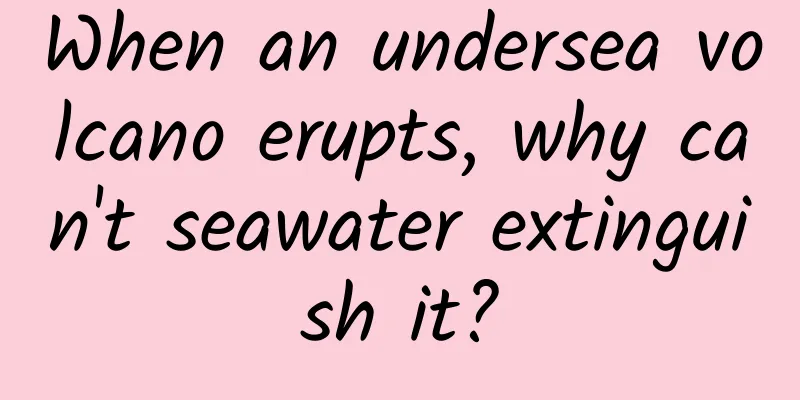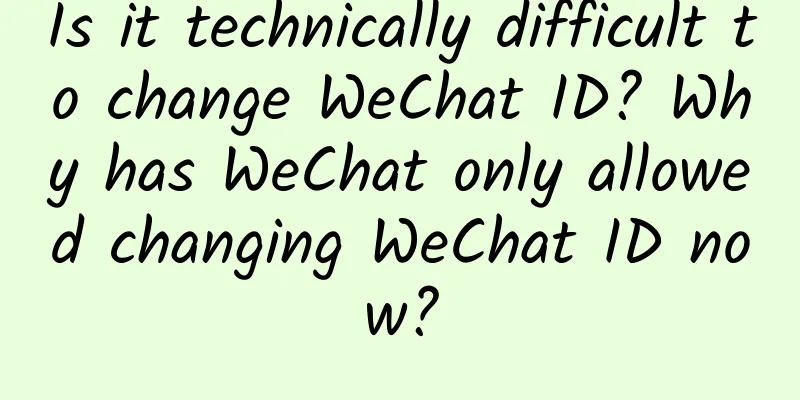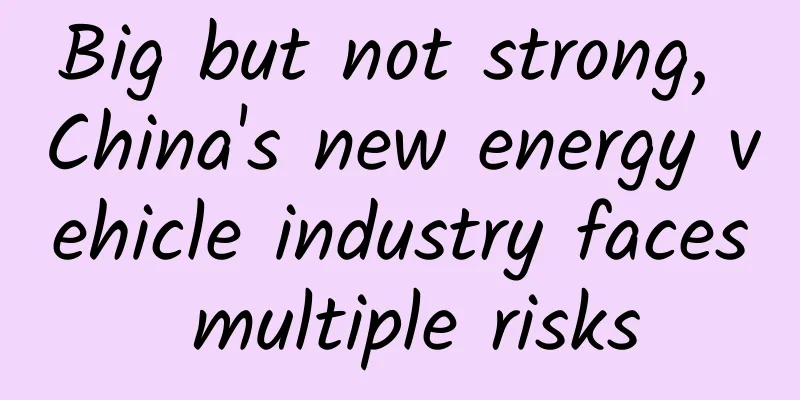When an undersea volcano erupts, why can't seawater extinguish it?

|
Submarine volcanoes, as the name suggests, are volcanoes located at the bottom of the ocean. The formation principle of submarine volcanoes is similar to that of volcanoes on the ground, except that they grow in the sea, so they become submarine volcanoes. 1. Different types of submarine volcanoes Just like the distribution of volcanoes on land, submarine volcanoes are distributed within plates and at plate boundaries. There are three types of plate boundaries: convergent plate boundaries, divergent plate boundaries, and transform plate boundaries. Convergent plate boundaries and divergent plate boundaries produce volcanoes, while convergent plate boundaries generally produce volcanoes at subduction boundaries. Image source: Aige.com 1// Subduction Boundary Submarine Volcanoes The subduction boundary refers to the collision between two plates when they are in relative motion. Due to the different densities of the two plates, the denser plate will subduct under the less dense plate, forming a subduction zone. In the subduction zone, the relative motion of the two plates does not stop. The denser plate will continue to subduct deep into the earth. Due to the increase in temperature and pressure in the deep, the first part of the plate that subducts will melt, causing the plate to disappear. Oceanic plates are generally denser than continental plates, so when oceanic plates collide with continental plates, they will subduct under the continental plates to form trenches. Under the subduction zone, the friction between the subducting plates forms local high temperatures, and the dehydration of some water-containing minerals will also lower the melting point of rocks, so the rocks will melt in large quantities to form magma. In addition, seawater entering the subduction zone from the trench will also cause rocks to react and form magma. When magma gathers and rises in the crust, it will trigger volcanic activity. Magma deep underground under the trench can easily rise to the surface along the cracks in the subduction zone. If the rising surface is on the seabed, a submarine volcano will form. Image source: Love to Submarine volcanoes at the subduction boundary are mostly distributed near the trench. If the magma from this submarine volcano continues to erupt and emerges from the sea surface and then cools, a volcanic island will be formed. The island chains that often appear on the land side of the trench may be formed in this way. The submarine volcanoes in the Pacific Ring of Fire are of this type, and the Tonga submarine volcano is on this volcanic belt. 2// Discrete plate boundary submarine volcanoes The divergent plate boundary is also called the growth boundary, which is the boundary where two plates separate from each other. It is common in the mid-ocean ridge. The mid-ocean ridge is where the plates grow. The crust in this place is very thin and it is easy to crack. The magma deep in the crust rises to the seabed along the cracks, forming submarine volcanoes. Most submarine volcanoes are on the divergent plate boundary. The Mid-Atlantic Ridge Volcanic Belt is this type. The submarine volcanoes near Iceland are on this volcanic belt. Image source: Love to 3// Undersea volcanoes within the plate Volcanoes formed inside plates are called hotspot volcanoes, which are said to be related to mantle plumes. Mantle plumes are high-temperature channels that exist between the mantle and the core like pillars. The rocks at the bottom of the crust where they are located are melted into magma, which then increases in temperature and expands, eventually compressing and impacting the surface of the crust, causing volcanic eruptions. If the location of the volcanic eruption is on the seabed, submarine volcanoes will also form. The Hawaiian Island Chain is an island chain formed by the eruption of a hotspot submarine volcano located inside the Pacific Plate. 2. Distribution of submarine volcanoes By understanding the different types of submarine volcanoes, we can also understand the approximate distribution of submarine volcanoes around the world - mainly distributed in the Pacific Ocean and the Indian Ocean and the mid-Atlantic ridge area. In addition, there may also be some submarine volcanoes in the mantle plume hotspots inside the Pacific Ocean and the Indian Ocean. According to statistics, there are more than 20,000 submarine volcanoes in the world, more than half of which are located in the Pacific Ocean, mainly due to the Pacific Ring of Fire. Image source: Internet There are submarine volcanoes in some of my country's seas. They are mainly distributed in the South China Sea and the East China Sea, including Hainan Island, Xisha Islands, Nansha Islands, Qiongzhou Strait, etc. Gaojianshi in Xisha Islands is the outcrop of a submarine volcano. There are also submarine volcanoes in my country's South China Sea Basin and the waters around Taiwan. However, my country's submarine volcanoes are very old and are currently very weak. 3. Why can’t the fire in water be extinguished? Why can't submarine volcanoes be extinguished by sea water? First of all, the principle of extinguishing a fire with water is to isolate oxygen and cool it down, but magma does not rely on oxygen to burn. It is itself a molten substance with a temperature of 900 to 1400°C. The critical pressure of water is about 22 MPa. The pressure at the bottom of the deep sea has exceeded the critical pressure, and liquid-gas phase change will not occur. Even if magma heats the seawater to several hundred degrees Celsius, the seawater will only become a supercritical fluid state, thus separating the seawater and magma. When an underwater volcano erupts, the pressure is very high. Even the huge water pressure on the seabed cannot stop the power of the volcanic eruption, so it is impossible to extinguish the volcano. Image source: pexels Moreover, seawater cannot extinguish volcanoes, but it can easily increase the destructive power of submarine volcanic eruptions. According to relevant research, the Tonga submarine volcanic eruption was so powerful that it was likely due to a large amount of seawater pouring into the magma pool, causing a mixed explosion. 4. What impact will the eruption of an underwater volcano bring? First of all, we still have to look at the level of the volcanic eruption. Volcanic eruptions are divided into 9 levels according to the volume of the erupted material, namely VEI0~8. The larger the number, the greater the impact. Generally speaking, submarine volcanic eruptions above VEI6 will have a more obvious impact on the world, while the impact of 3~5 is limited to some areas, and the impact of 0~2 will only be limited to the local area of the volcano. The eruption of an undersea volcano will first bring about a tsunami, because the eruption will cause drastic changes in the seabed topography, and the tsunami it brings will be no less than a major earthquake. Image source: Pixabay Undersea volcanic eruptions will have an impact on ocean currents because they generate a lot of heat, which may affect the cold and warm currents in the ocean for a short period of time. Undersea volcanic ash has an impact on the surrounding atmosphere. The erupted volcanic ash will pollute the atmosphere. The sulfides in it may reduce solar radiation and affect the ground temperature, commonly known as the parasol effect. Undersea volcanic eruptions will cause a large amount of water vapor to enter the atmosphere. The Tonga submarine volcanic eruption is an example. Its impact on the atmosphere is still being evaluated. In addition, submarine volcanic eruptions will affect the survival of marine life and have an impact on ecology, fisheries and marine aquaculture. Image source: Pixabay On the one hand, submarine volcanic eruptions have caused huge losses to human society, but on the other hand, they have also brought a variety of resources. Volcanic islands and circular coral reefs around volcanoes formed by submarine volcanic eruptions are also important tourism resources, and tourism is an important pillar of the national economy of Pacific island countries. In addition, submarine volcanic eruptions will also form various volcanic deposits, such as copper, gold, pyrite, barite and other metal or non-metallic minerals. Source: Chongqing Science and Technology Museum Author: Deng Feng, major in Geography Statement: Except for original content and special notes, some pictures are from the Internet. They are not for commercial purposes and are only used as popular science materials. The copyright belongs to the original authors. If there is any infringement, please contact us to delete them. |
<<: Attosecond electron microscopy: the ultimate challenge of temporal and spatial resolution
Recommend
Sacon’s dilemma: Rapid decline in performance means there are not many cards left to play
Sacon, once ranked first in the kitchen appliance ...
Cat full set photography course bride and groom pose beautifully
Cat full set photography course bride and groom p...
Why is the epidemic in Jilin so serious in 2022? It is mainly related to these 3 reasons!
Since the local epidemic broke out in Jilin Provi...
When plants are injured, they actually bleed?
When walking in the Garden Expo Park, have you ev...
Jiang Chao, Yang Zhe, Li Nan, Lu Weibing... "little people" in the era of mobile phones
Before Jiang Chao finished his words “Coolpad wil...
One picture to understand|It turns out that Qu Yuan also celebrated the Dragon Boat Festival
Produced by: Dongdong Miao, WeChat ID: Dongdongme...
Why cut advertising budget?
A piece of data: In the first half of 2019, adver...
Six trends in brand experience reshaping in 2022
Red Havas, a global micro-network of integrated m...
Stop eating like a glutton! These types of people should pay special attention →
Review expert: Wang Xuejiang, professor at Capita...
Are you anxious about the college entrance examination? Let's hear what the experts say
It's June again, and as the college entrance ...
Apple iOS 14.5/iPadOS 14.5 official version released: iPhone 12 5G optimization, AirTag "Find", App tracking transparency, iPhone 11
IT Home reported on April 27 that one week after ...
Teach you how to customize iOS 14 APP icons
Since the release of iOS 14, desktop widgets and ...
Don't put these 5 types of food in the refrigerator, they will go bad faster
The refrigerator carries people's expectation...
Turtle Class Tik Tok Becomes Real Combat Training Camp 2
With the arrival of March, our Turtle Class Tik T...









